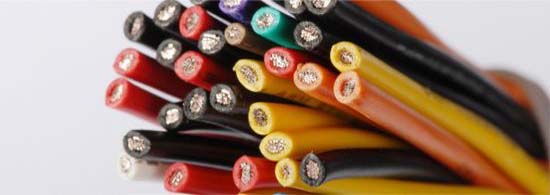Choosing quality elastomer products for diverse application and industry needs calls for the evaluation of a host of factors like system pressure, the cost of material, static or dynamic application, chemical compatibility, design issues, heat, installation practices, cold and friction, durability, product use, and equivalent maintenance frequency. Because of multiple interrelating forces, we recommend that you meticulously test the elastomer you choose for your application. Read on to learn about the different types of elastomer products and rubber material compounds.
Nitrile
Nitrile (NBR) is extensively used in the seal industry because of its outstanding resistance to petroleum items, as well as its capacity to combine with other substances for use over a temperature range of -22 degrees Fahrenheit to 212 degrees Fahrenheit. It is a copolymer consisting of acrylonitrile and butadiene. Proportional differences in these polymers are likely to adapt to particular requirements. With more acrylonitrile content, the elastomer will experience an increased resistance to petroleum base oils, heat, and fuels. But with increased acrylonitrile, nitrile compounds will experience reduced temperature flexibility. For military AN and MS o-ring stipulations, you will need nitrile rubber compounds with less acrylonitrile content for low-temperature performance. Nitrile compounds have outstanding compression set, and abrasion and tear resistance. The primary drawback of this elastomer product is its poor weather and ozone resistance and average heat resistance. However, these are not restrictive factors in a number of applications. Nitrile is widely used in automobile, fuel, aircraft, marine systems, and for general industrial applications.
Ethylene-Propylene
Ethylene-propylene (EPDM) rubber compounds are manufactured from propylene, ethylene, and monomer. They are commonly used for sealing hot water, steam, and brake systems. Ethylene propylene composites have great resistance to detergents, mild acids, silicone oils, alkalis, alcohols, and ketones. However, these compounds are not suitable for applications with mineral oil, petroleum oils, fuel exposure, and di-ester lubricants. EPDM is widely used in the seal industry because of its outstanding chemical and ozone resistance properties. It is also compatible with several polar liquids that have an adverse impact on other elastomers. Ethylene-propylene compounds are usually manufactured with a peroxide or sulfur cure system. Peroxide-cured elastomers are ideal for higher temperature contact and have superior compression set performance. The application benefits include great low-temperature flexibility, heat resistance, and exceptional resistance to weather and chemicals. EPDM compounds are used in faucets, water system seals, cooling systems in automobiles, ozone exposure applications, and for normal industrial applications.
Hydrogenated Nitrile
Hydrogenated Nitrile (HNBR) is produced by fully or partly hydrogenating nitrile. This method Apart from saturating the polymeric chain, this method also enhances the heat, ozone, and aging resistance of elastomer products. This consequently develops the overall mechanical properties of the compound. An increase in acrylonitrile content in HNBR results in increased resistance to petroleum based oils, fuels, and heat. However, it reduces the lower temperature performance. The application benefits are enhanced ozone and fuel resistance compared to nitrile (almost five times), and outstanding oil, abrasions and heat resistance. HNBR is used in oil well applications, oil resistant applications, automobile, fuel, aircraft, and marine systems.
Polyacrylate
Polyacrylates (ACM) are copolymers of acrylates and ethyl with good resistance to oils and petroleum fuels. They also hold on to their properties when sealing oils or petroleum fuels at higher temperatures of up to 300 degrees Fahrenheit. Such properties make ACM ideal for use in steering systems, automated transmissions, and in other applications where resistance to high temperature and petroleum is essential. ACM compounds also have good resistance to cracking when exposed to heat and ozone. They are not suitable for use in applications where the elastomer is exposed to chlorinated hydrocarbons, brake fluids, glycols, and alcohol.
High-quality elastomer products are valued for their performance and versatility. Choose the right rubber compounds that can be customized for diverse applications such as automotive, marine, aircraft, building, construction, and engineering.


